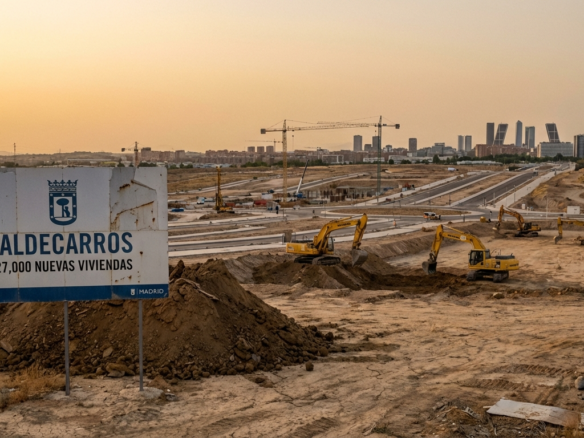The European Union’s real estate market is a dynamic landscape, reflecting diverse economic conditions, cultural nuances, and evolving investment opportunities across its member states. This article delves into the current trends, challenges, and prospects within the EU real estate sector, offering valuable insights for investors, professionals, and enthusiasts alike.
Get 50% OFF!
Subscribe to our newsletter and enjoy a 50% discount on all listing packages, no strings attached!

Greece: Europe’s Most Affordable Housing Market
Over the past 15 years, Greece has maintained its position as the most affordable real estate market in Europe, with housing prices increasing by only 4.2%. This modest growth contrasts sharply with significant price hikes in countries like Spain, Portugal, and Israel, where increases have reached up to 150%.
Between 2010 and 2015, Greece’s real estate market experienced substantial declines, with housing prices dropping by an average of 45%. Major cities such as Athens and Thessaloniki saw decreases exceeding 50%, positioning the market among the lowest in Europe. This downturn was primarily due to reduced demand and the country’s broader economic challenges.
Since 2017, the Greek real estate market has been on a recovery trajectory, with prices gradually returning to 2009 levels. Despite a 56% increase over the past five years, Greece remains one of Europe’s most affordable markets, presenting attractive opportunities for investors and foreign buyers.
Germany: Navigating a Unique Housing Crisis
Germany is currently grappling with a significant housing shortage, necessitating the construction of 320,000 new apartments annually until 2030 to meet demand. However, in 2024, permits were issued for only 216,000 apartments, marking the slowest pace since 2010 and falling short of the federal government’s target of 400,000 units per year. This shortfall is exacerbated by a growing population, bolstered by immigrants from Ukraine and Syria.
The German real estate sector, valued at €730 billion, faced a downturn in 2022 following rapid interest rate hikes by the European Central Bank to combat severe inflation. This shift led to halted construction projects, job losses, plummeting property sales, and bankruptcies among real estate developers.
Spain: A Resilient and Growing Market
Spain’s real estate market has demonstrated resilience and growth in recent years. The market is projected to reach US$7.38 trillion in 2025, with the residential sector accounting for US$5.90 trillion. This growth is anticipated to continue at an annual rate of 2.73%, reaching US$8.22 trillion by 2029. Coastal regions and major cities like Barcelona and Madrid remain popular investment areas, attracting both domestic and international investors.
Romania: Competitive Pricing in the Capital
Bucharest, the capital of Romania, offers some of the lowest housing prices in Europe. The city provides advantageous residential prices compared to other regional capitals, making it an attractive option for investors seeking affordability coupled with growth potential.
France: Stability Amid Global Uncertainty
France’s real estate market has remained relatively stable, with steady demand in both residential and commercial sectors. Major cities like Paris continue to attract investors due to their economic resilience and cultural appeal. However, challenges such as regulatory changes and environmental considerations are influencing investment strategies.
Italy: Revitalizing Urban Centers
Italy is witnessing efforts to revitalize urban centers, with investments focusing on sustainable developments and heritage conservation. Cities like Milan and Rome are experiencing renewed interest, blending modern infrastructure with historical preservation to attract both residents and tourists.
Poland: Emerging Investment Hub
Poland has emerged as a notable investment hub within the EU, driven by economic growth and a burgeoning middle class. Cities like Warsaw and Kraków are experiencing increased demand for residential and commercial properties, supported by favorable business environments and strategic locations.
EU-Wide Trends: Sustainability and Technological Integration
Across the European Union, sustainability and technological integration have become central themes in real estate development. There’s a growing emphasis on eco-friendly buildings, energy efficiency, and smart technologies to meet environmental goals and cater to the evolving preferences of consumers and businesses.
Conclusion
The European Union’s real estate market presents a complex yet promising landscape. From Greece’s affordability and Germany’s housing challenges to Spain’s growth and Romania’s competitive pricing, each country offers unique opportunities and hurdles. Investors and professionals must navigate these diverse markets with a keen understanding of local dynamics, regulatory environments, and global economic factors. Embracing sustainability and technological advancements will be crucial in capitalizing on the evolving trends within the EU real estate sector.




Join The Discussion